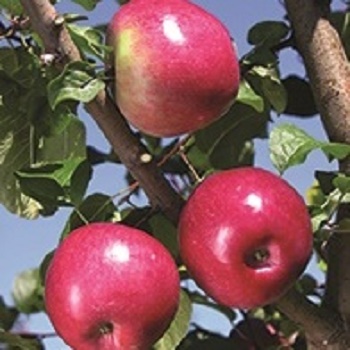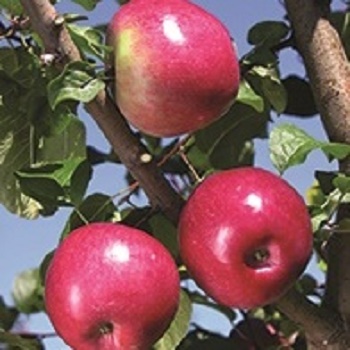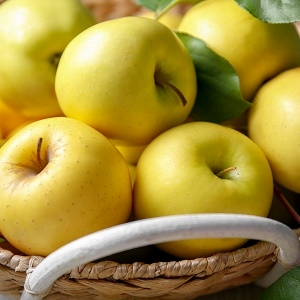Due to CFIA regulations we cannot ship plants outside of Canada and cannot ship fruit trees or grape vines to BC.
You are $500.00 away from a 10% discount
Home » Shop » Trees » Apple » Super Dwarf »
Apple : LIBERTY Super Dwarf (M27)
$53.95
Liberty has the distinction of being the most disease resistant variety developed to date. Crisp, juicy, light yellow flesh with sprightly flavour. Good for eating fresh, cooking, canning or desserts.
Hardy, vigorous tree sets heavy fruit loads, so it benefits from thinning to ensure larger fruit. Flavour develops further when the apples are left in storage. Will keep for 3-4 months. Very reminiscent of McIntosh, this is the #1 backyard apple tree.
NEEDS A POLLENIZER | ZONE 4 | HARVEST: EARLY-MID OCT.
Super Dwarf Product Overview
Super Dwarf Apples
Our super dwarf apple trees are grafted onto M27 rootstock which has an extremely dwarfing effect producing a tree that will be no more than 1.5 - 2 meters (5 -6') tall at maturity. There are many interesting advantages to growing such a small tree. Not only are they easy to pick they can be grown in incredibly confined spaces including a large patio container.
M27 trees mature very quickly, bearing a good crop only 2 years after planting and reach their maximum height after only 3 to 4 years. Since their root systems are also small, these trees cannot support themselves and will need to be planted with a stake whether they are going in the ground or in a container. Watering and a good mulching is important.
Bareroot trees.
Only logged in customers who have purchased this product may leave a review.
Growing Tips
Apple Growing Tip
Besides selecting the most disease resistant varieties, there are
a few simple things to do to have better apples.
- Fertilize under the outer edges of your trees. There are no feeder roots next to the trunk. A well fed tree stays healthier. (Adequate calcium in the soil also helps so that apples keep longer.)
- Pick up fallen fruit and compost, dispose of, or feed to livestock (where possible).
- Rake up leaves in the fall and compost them away from the orchard.
- Prune trees to encourage light and air to reach the inside of the tree.
- Provide bird nesting sites near your orchard. A variety of orchard companion type plants will attract native pollinator insects and also encourage birds to come and eat insect pests.
Other Super Dwarf
Browse other products in this rootstock and zone.





Reviews
There are no reviews yet.